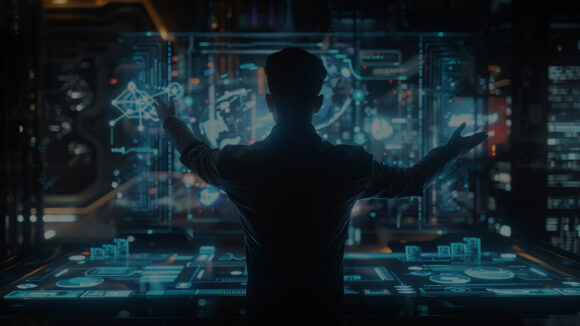Computer Vision is a branch of AI that gives computers the ability to interpret and understand digital images. We’ll be discussing the basics of computer vision – what it is, how it works, and some of its potential applications. This is an exciting field with a lot of potential, so read on to learn more!
How will Computer Vision Change the World?
We live in a world where computers are becoming increasingly prevalent. They are used for a variety of tasks, ranging from simple data entry to complex analysis. In order to perform these tasks, computers need to understand the data they are given. This is where computer vision comes in.
Computer vision is the process of teaching computers how to interpret and understand digital images. This is done with algorithms, which are sets of instructions that can be run by a computer to achieve a specific goal. In the case of computer vision, these algorithms are designed to extract text from images.
Main Features of Computer Vision
1. Text Extraction
One of the most exciting applications of computer vision is text extraction. By using optical character recognition (OCR), computer vision can analyze an image and convert it into digital text that can be read by a machine. This text can then be used for various purposes, such as search or translation.
Text extraction is not only useful for digital documents; it can also be used to interpret the handwritten text. This is especially useful in cases where the original document is not available, or when the handwriting is difficult to read. By using computer vision to convert handwritten text into digital text, we can make it much easier to access and use this information.
2. Image Understanding
In computer vision, image understanding is the process of inferring high-level information from digital images. This can be difficult, as images can be extremely complex and ambiguous. However, recent advances in machine learning have made it possible for computers to automatically learn to extract meaning from images.
Image understanding is a key component of many applications, such as object recognition, scene understanding, and image search. In each of these tasks, the goal is to take an image as input and output some type of high-level information about the image.
Machine learning is playing an increasingly important role in image understanding. By harnessing the power of big data and deep learning, computers can now automatically learn to extract insight from an image.
3. Spatial Analysis
Computer vision is using computers to interpret and understand digital images. This technology is used in a variety of applications, such as security and surveillance, automotive safety, medical image analysis, and robotic navigation.
Spatial analysis is a key component of computer vision. This process involves understanding the geometric relationship between objects in an image. This information can be used to detect objects, track their movement, and recognize patterns.
Applications of Computer Vision
There are many different potential applications for computer vision. Some of the most popular include,
- Autonomous vehicles – Computer vision can be used to teach cars how to drive themselves. This includes tasks such as detecting other vehicles on the road, understanding traffic signs, and more
- Facial recognition – Computer vision can be used to teach computers how to recognize human faces. This technology is already being used by some companies for security purposes
- Object recognition – Computer vision with built-in AI capabilities can be used to teach computers how to identify objects in images or videos
Conclusion
Computer vision has a wide range of applications in both the public and private sectors. It can be used for everything from facial recognition to autonomous driving. While there are still some limitations to this technology, it is slowly improving and will likely become even more common in the coming years.





